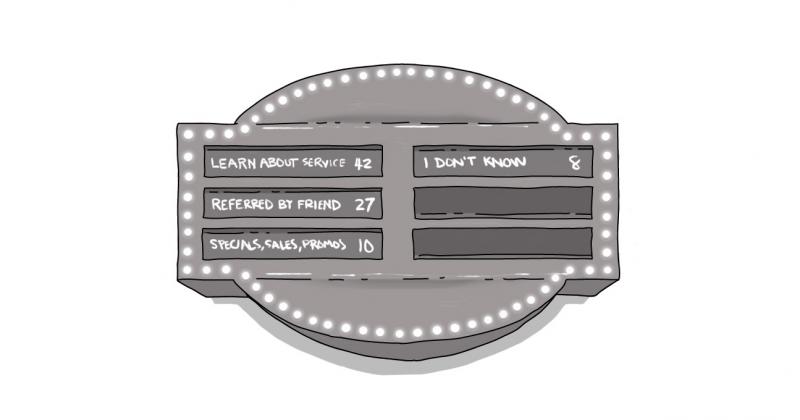Thriving or Merely Coping? When Good May Not Be Good

There can be a huge difference between a “Yes” and a “Yes.”
Context is everything and when you’re reaching out to customers and users for feedback, you want to ensure you find that balance between qualitative and quantitative observations. Why? Because sometimes a yes isn’t a yes.
Think about this. If you do a survey and you ask someone, “Do you like Item A?” The survey result can say “Yes.” But if you ask that person face-to-face, how long does it take to get to that yes? How long is the pause? What does the body language say? How many contortions do their faces make when they say “yes.”
User research is great, but its greatest value comes from the context. And in-person discussions can help you understand whether your customers are thriving -- or merely coping.
When you’re doing redesign of a website and trying to incorporate user feedback, it’s important to contextualize where that information is coming from. People may be used to your existing structure and be falsely content. They’ve been conditioned to use a structure and have grown familiar with its idiosyncrasies. So, if you ask them out of context whether or not they like something, they may artificially rate it higher. They’re used to it, but is it actually good?
When developing information architecture, we want to ensure the best possible experience. Absent context, users may not know there’s a better option. Sure, the grass may not always be greener -- but if you aren’t even aware that there’s another lawn somewhere, what do you have to compare it to?
That’s why in-person discussions matter. We’ve worked with clients where we’ve done general satisfaction surveys where the numbers are deceptively positive. But when you sit down in a room with focus groups or have one-on-one discussions, the actual challenges come spilling forth.
- “I didn’t think of this, but, yeah -- that is annoying.”
- “Well, I have a work around so the fact that functionality doesn’t work doesn’t bother me anymore.”
- “I just don’t use that tool at all. I go and call someone instead…”
- “What choice do I have? I have to use what we have.”
Sometimes a yes isn’t a yes. And a good facilitator will not be staring at a sheet, looking to read the next question, but rather will be scanning the group, not only listening to what they say, but watching how they say it. The ability to read body language, understand tonality of voice, and see discomfort can dramatically improve any interaction.
You need to be able to probe into the answers and go off script. You need to be able to challenge what someone’s response may be -- in a positive way -- “Well that response seems underwhelming/guarded. Is there something about the process that isn’t working for you?”
And this works extremely well in group sessions. Once someone brings up a roadblock, challenge, or wish, it can start the ball rolling for other people to understand that they’re not alone with challenges. There’s comfort in numbers and giving people a chance to commiserate about the issues they’re facing is cathartic -- and then if you can channel that group into providing solutions and ideas for growth, then you have success for all.
Surveys can be great, especially if they’re well structured. If you’re allowing for more granular analysis of components or items, then you can gather better comparisons. If you allow for users to provide context, through open-text answer boxes where they can share their thoughts, you can better understand answers. But if you’re too high-level and vague, you’re going to end up with superficial results that may not accurately represent true sentiment.
A combination of both can help you round out your perspective and provide context to your user group. After all, sometimes a yes isn’t actually a yes -- but if you can’t hear or see how that yes is formed, you may miss out on an opportunity to improve.
How do I get good user feedback?
SUBSCRIBE TO OUR E-NEWSLETTER
 Subscribe
Subscribe


